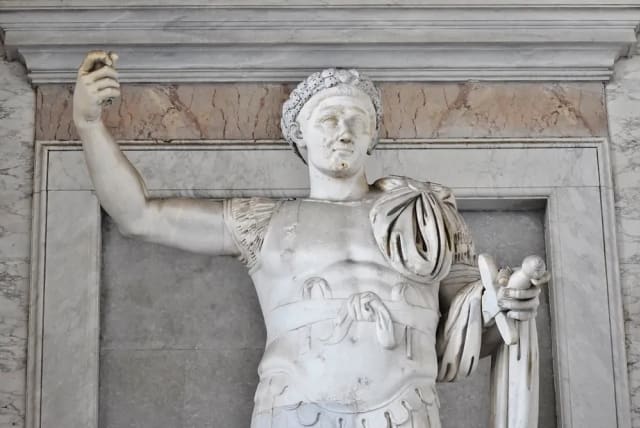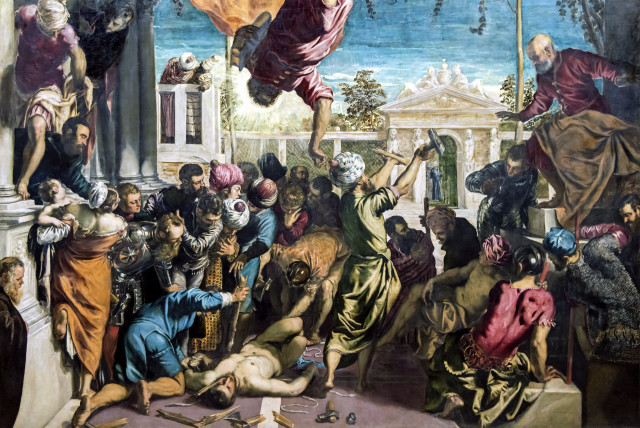Paganism to Christianity: Roman temple reveals ancient cultural blending

The forces that drove Rome to become Christian did not immediately transform the empire into an entity that practiced modern Christianity. It was a process.
Researchers uncovered an ancient Roman temple that deepens our understanding of the social change of paganism to Christianity in the Roman Empire, a Friday news release from Saint Louis University announced.
“We found three walls of a monumental structure that evidence suggests belonged to a Roman temple that dates to Constantine's period,” Saint Louis University history professor Douglas Boin, Ph.D. said. Boin made the announcement of the discovery at the annual meeting of the Archeological Institute of America.
“[The temple] dates to the fourth century AD, and it would be a remarkable addition to the landscape of this corner of Italy,” Boin added. “It will significantly aid in the understanding of the ancient town, the ancient townscape, and city society in the later Roman Empire because it shows the continuities between the classical pagan world and early Christian Roman world that often get blurred out or written out of the sweeping historical narratives.”
Working in the town central Italian town of Spello, Boin and his team discovered the temple over the summer of 2023. The site was selected based on a 4th-century letter sent from Emperor Constantine to the town regarding a religious holiday.
The letter, a rescript discovered in the 18th century, advised the people living in Spellow that they were permitted to celebrate the religious observance locally, rather than having to travel elsewhere, on the condition that they build a temple to Emperor Constantine’s “divine ancestors,” the news release notes. Emperor Constantine is well known for his conversion to Christianity.
A state’s reverence of its leaders as gods or demi-gods, as was the case in the ancient Roman Empire, is often referred to as an “imperial cult.” In this context, the term “cult” does not carry a negative connotation but rather refers to a formalized system of religious practices and beliefs.
"Things didn't change overnight"
“There was a remarkable religious continuity between the Roman world and the early Christian World,” Dr. Boin stated. “Things didn't change overnight. Before our find, we never had a sense that there were actual physical, religious sites associated with this late ‘imperial cult practice.’ But because of the inscription and its reference to a temple, Spello offered a very tantalizing potential for a major discovery of an Imperial cult underneath a Christian ruler.”
Boin added that there is evidence from other places throughout the ancient Roman world that suggests Christian rulers supported practices associated with the Roman imperial cult.
“We've known that pagans worshiped at their temples in the fourth century, but those findings have all been small and inconsequential,” Boin added. “And we've known that Christians supported the imperial cult, and we’ve known that without any sense of where it would have happened. This temple bridges those two landmarks, and in that respect, it is unlike any temple that I know about from the Mediterranean world of the fourth-century Roman Empire. Any study of the imperial cult in the fourth century Roman Empire is now going to have to take account of this temple, which is an incredible discovery to make.”
Boin emphasized that the discovery italicizes that major cultural changes do not occur overnight. Simply, the forces that drove Rome to become Christian, such as Constantine's conversion, did not immediately transform the empire into an entity that practiced modern Christianity. Rather, pagan traditions lingered in this ascendant Christian culture for a time.
Jerusalem Post Store
`; document.getElementById("linkPremium").innerHTML = cont; var divWithLink = document.getElementById("premium-link"); if (divWithLink !== null && divWithLink !== 'undefined') { divWithLink.style.border = "solid 1px #cb0f3e"; divWithLink.style.textAlign = "center"; divWithLink.style.marginBottom = "15px"; divWithLink.style.marginTop = "15px"; divWithLink.style.width = "100%"; divWithLink.style.backgroundColor = "#122952"; divWithLink.style.color = "#ffffff"; divWithLink.style.lineHeight = "1.5"; } } (function (v, i) { });

